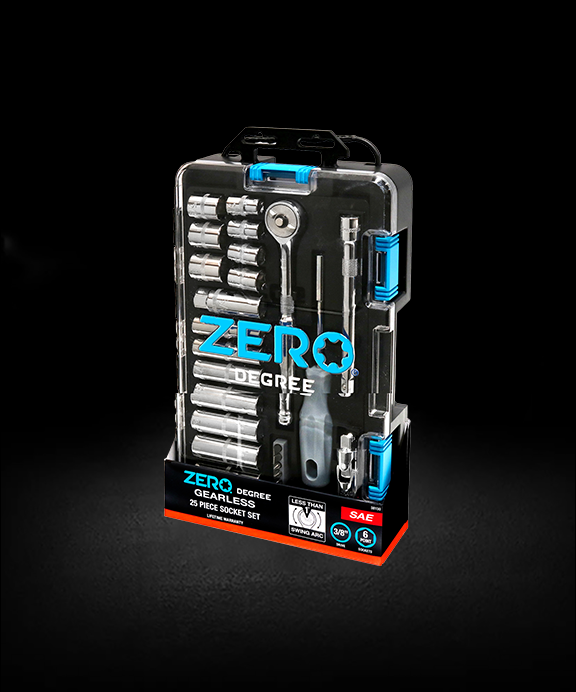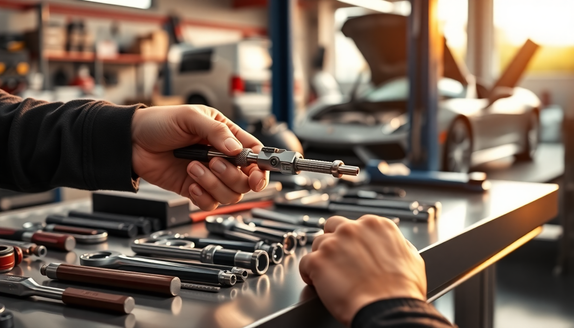Christmas sale upto 10% off
The Importance of Tool Safety: Best Practices for Auto Repair
As an auto repair professional, ensuring the safety of your tools and equipment is paramount. At Zero Tools, we understand the critical role that tool safety plays in maintaining a productive and hazard-free work environment. In this blog post, we'll explore the importance of tool safety, common safety hazards, and best practices to keep your auto repair shop running smoothly and your team safe.
Common Safety Hazards in Auto Repair
Auto repair work involves a wide range of tools and equipment, each with its own set of potential safety risks. Identifying and addressing these hazards is the first step in creating a safer workplace.
Physical Risks
From heavy-duty power tools to sharp hand tools, the physical dangers in an auto repair shop can be significant. Improper use, lack of maintenance, or careless handling can lead to serious injuries, such as cuts, lacerations, and crush injuries.
Chemical Exposure
Auto repair work often involves the use of various chemicals, such as solvents, lubricants, and cleaning agents. Exposure to these substances can pose health risks if proper safety protocols are not followed, including the use of personal protective equipment (PPE) and proper storage and disposal methods.
Electrical Hazards
Electrical tools and equipment used in auto repair can present a significant risk of shock or electrocution if not properly maintained and used. Ensuring that all electrical systems are grounded and that tools are in good working condition is crucial.
Essential Safety Equipment
Protecting your team and your tools is essential for a safe and productive auto repair shop. Investing in the right safety equipment can help mitigate the risks associated with your work.
Personal Protective Equipment (PPE)
Proper PPE, such as safety glasses, gloves, and steel-toed boots, can help prevent injuries and reduce the severity of accidents. Ensure that your team is equipped with the necessary PPE and that they understand the importance of using it consistently.
Proper Tool Storage and Organization
Keeping your tools organized and stored safely is another important aspect of tool safety. Utilize tool chests, cabinets, and racks to ensure that tools are easily accessible and not left lying around the workspace, where they can pose a tripping hazard or be damaged.
Best Practices for Tool Safety
Implementing best practices for tool safety is essential for maintaining a safe and efficient auto repair shop. Here are some key strategies to consider:
Proper Tool Selection and Use
Ensure that your team is using the right tool for the job and that they understand how to use it correctly. Provide training and guidance on proper tool usage to prevent accidents and maximize the effectiveness of your tools.
Regular Tool Maintenance and Inspection
Regularly inspect your tools for signs of wear or damage, and perform routine maintenance to keep them in top condition. This includes sharpening blades, replacing worn parts, and ensuring that power tools are properly lubricated and functioning correctly.
Workspace Organization and Cleanliness
A well-organized and clean workspace can significantly reduce the risk of accidents. Encourage your team to keep the work area free of clutter, properly dispose of waste, and maintain a high level of cleanliness throughout the shop.
Zero Tools' Commitment to Safety
At Zero Tools, we are committed to providing our customers with a comprehensive collection of high-quality tools that prioritize safety. Our tools are designed with a range of safety features, such as ergonomic grips, protective guards, and anti-slip surfaces, to help minimize the risk of accidents and injuries.
In addition to our product offerings, we also provide training and educational resources to help auto repair professionals develop a safety-first mindset. Our team of experts is dedicated to sharing best practices, industry insights, and safety tips to empower our customers and foster a culture of safety in the auto repair industry.
Developing a Safety-First Mindset
Cultivating a safety-first mindset is essential for creating a safe and productive auto repair shop. This involves not only implementing the right safety protocols and equipment but also fostering a culture of continuous learning and improvement.
Creating a Safety Culture in the Workshop
Encourage your team to actively participate in safety discussions, report any hazards or concerns, and take ownership of their role in maintaining a safe work environment. Recognize and reward employees who demonstrate a strong commitment to safety, and make it a core value of your business.
Continuous Learning and Improvement
Stay up-to-date with the latest safety regulations, industry best practices, and technological advancements in tool safety. Encourage your team to attend training sessions, participate in safety workshops, and share their knowledge and experiences with one another. By continuously learning and improving, you can stay ahead of the curve and ensure that your auto repair shop remains a safe and efficient workplace.
Conclusion
In the fast-paced and demanding world of auto repair, tool safety should be a top priority. By understanding the common safety hazards, investing in the right safety equipment, and implementing best practices for tool usage and maintenance, you can create a safer work environment for your team and better protect your valuable tools and equipment.
At Zero Tools, we are committed to supporting auto repair professionals like you in their pursuit of a safer and more productive workplace. Explore our comprehensive collection of tools and resources, and let us help you develop a safety-first mindset that will benefit your business and your team for years to come.








Leave a comment